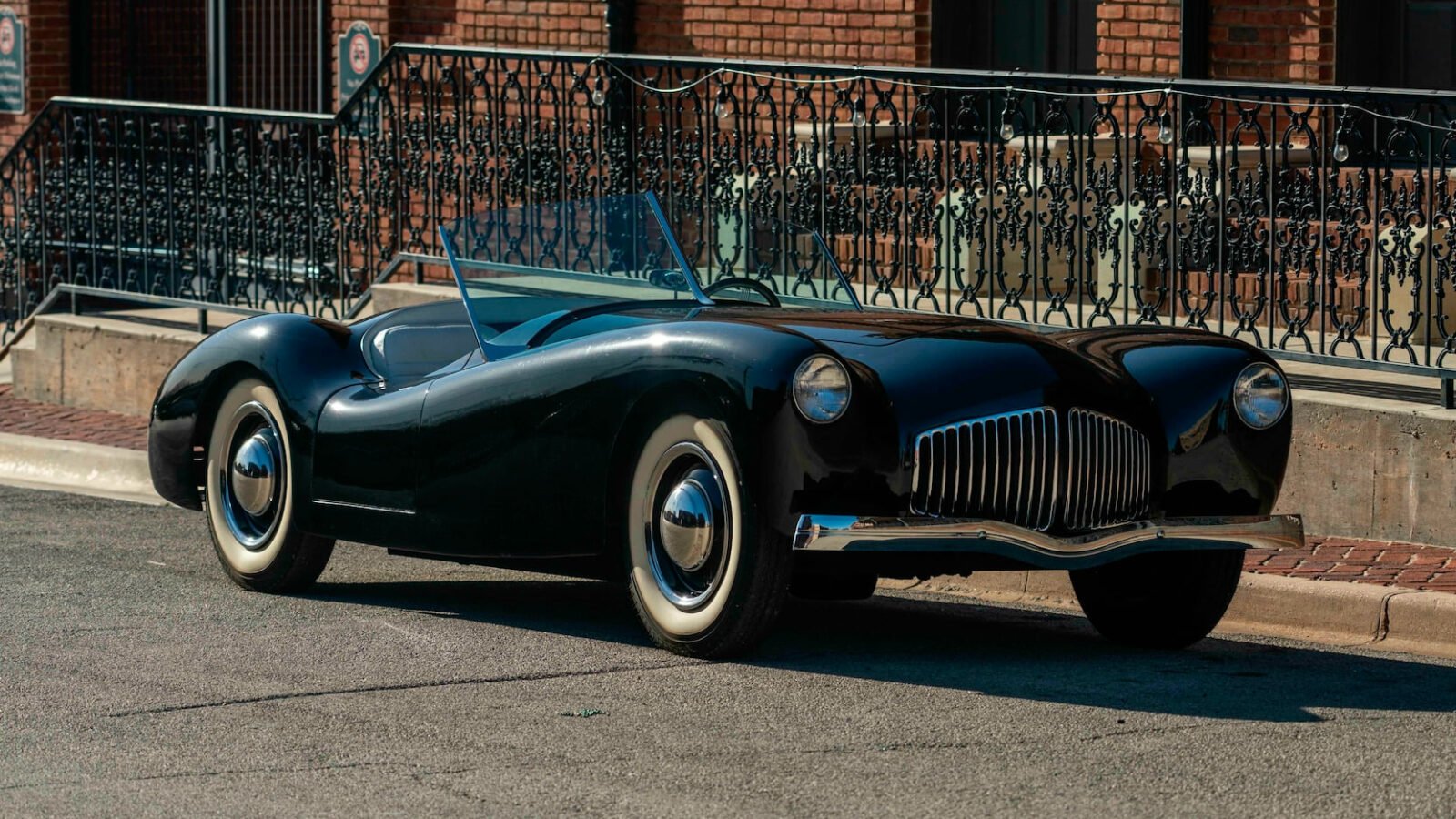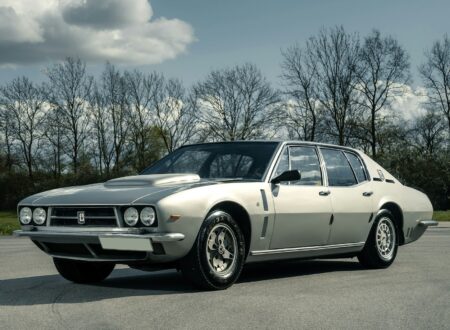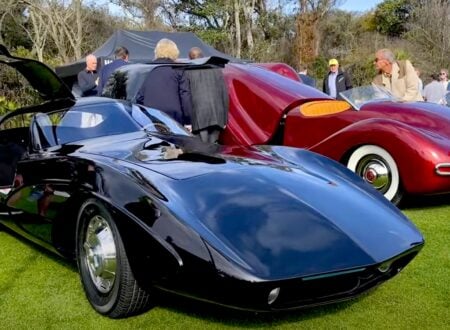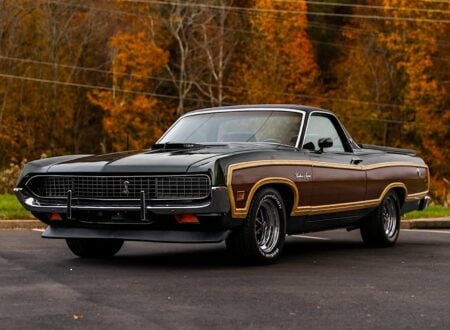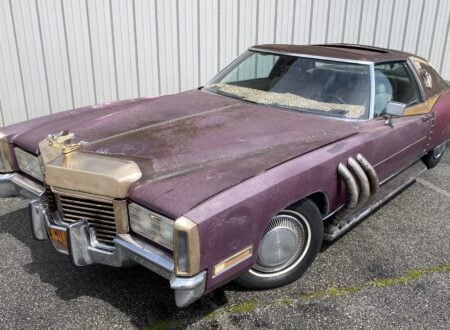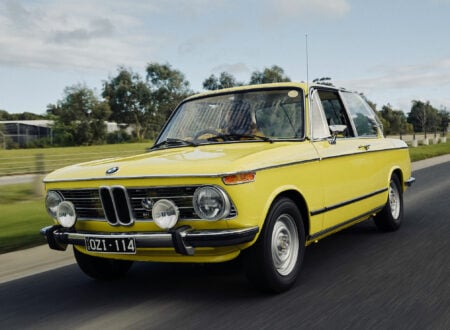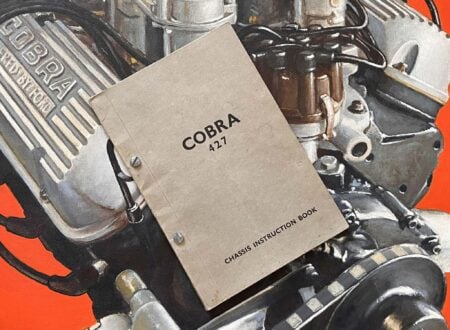The Glasspar G2 was unveiled in 1951, making it the first low-volume production fiberglass car in history and beating the Corvette to market by a full two years. In fact many have suggested that Chevrolet was inspired by the G2 and some of the other fiberglass cars of the early 1950s.
Glasspar originally started out making fiberglass boats in 1947 and became one of the largest manufacturers by the mid-1950s. The automotive side of the business was always small fry by comparison, but the lasting impact the company had on composite sports cars can be felt today, over 70 years later.
Fast Facts – The Glasspar G2
- The Glasspar G2 was the first low-volume production sports car to feature a fiberglass body, a revolutionary material at the time that was lightweight, durable, and rust-proof.
- This pioneering use of fiberglass construction allowed for significant weight reduction compared to traditional steel or aluminum, and it vastly simplified the process of fabricating automotive bodies from sheet metal which is typically far harder to work with.
- The G2 was typically powered by a Ford flathead V8 or a small-block Chevrolet V8, but its versatile design allowed owners to customize their cars with the engines, transmissions, and suspension arrangement of their choice.
- The G2’s success helped popularize kit cars, as many enthusiasts began to build their own fiberglass-bodied sports cars using G2 molds. This trend paved the way for an entire industry focused on customizable, DIY car construction, giving enthusiasts the opportunity to create unique, personalized vehicles.
- Between 1951 and 1955, only around 150 Glasspar G2s were produced with only a few of them surviving, making them rare and valuable collector’s items today.
Bill Tritt + Glasspar
The Glasspar G2 was a pioneering sports car, it holds a significant place in automotive history as the first low-volume production fiberglass bodied car – released years before the arrival of more famous rivals like the Corvette and the Meyers Manx. Its unique design and innovative use of materials set the stage for future developments in the industry, and as the brainchild of Bill Tritt the Glasspar G2 showcased the potential of fiberglass as a primary material for automotive body manufacturing.
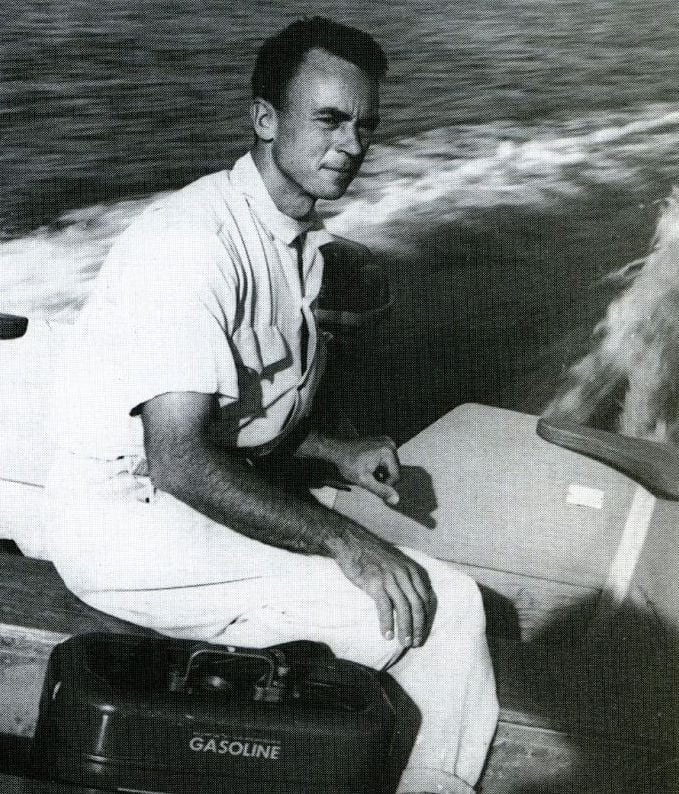

Bill Tritt, an American boat builder and marine architect, founded Glasspar in 1947. Originally focused on creating boats, Tritt soon recognized the potential of fiberglass as a lightweight, durable, and rust-proof alternative to traditional materials like steel and aluminum. This realization led to the inception of the Glasspar G2, his groundbreaking fiberglass sports car.
Tritt’s work in the marine industry would dwarf his involvement with sports cars, he was the first in the world to make a fiberglass mast and spars for sailboats, and at one point in the mid-1950s Glasspar was building an estimated 15-20% of all fiberglass boats being sold in the United States coast to coast.
The Glasspar G2 Arrives
In 1950, Tritt partnered with Kenneth “Kenny” Brooks, a talented race car driver, to create a custom fiberglass body for a chassis provided by Brooks. The result was the “Brooks Boxer,” a lightweight, eye-catching sports car that quickly gained attention nationwide. The success of the Boxer inspired Tritt to refine the design and launch the Glasspar G2, the first low-volume production fiberglass sports car.
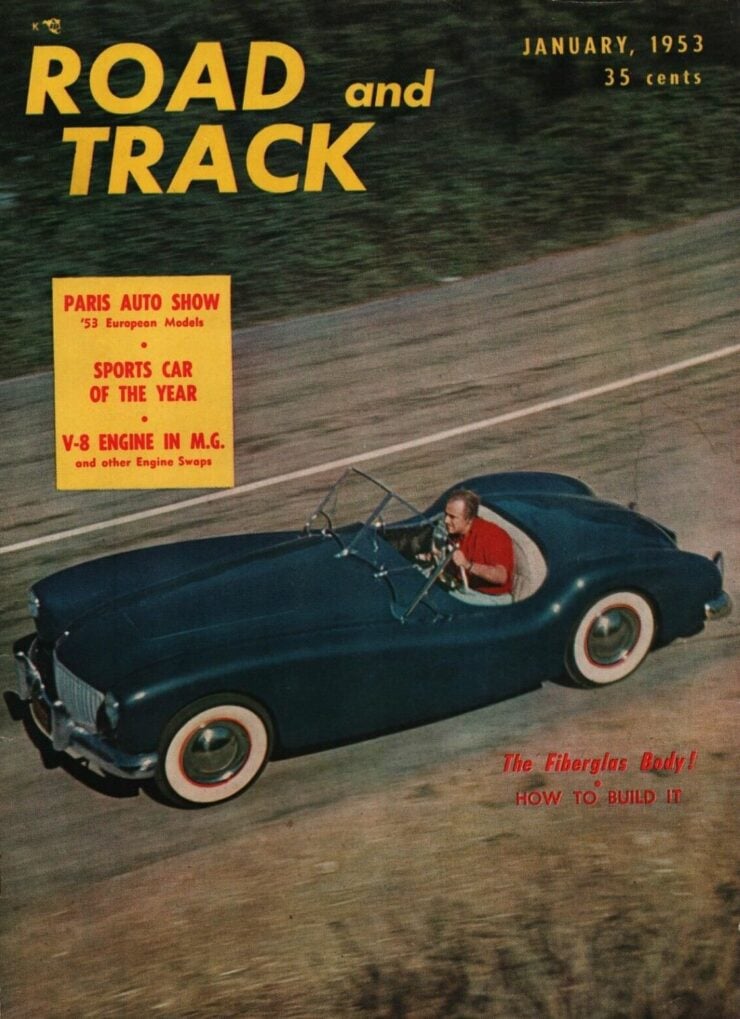

The Glasspar G2 was designed with sleek, flowing lines and a low profile, giving it a striking appearance that was perhaps inspired by the popular Jaguar XK120 of the time.
Its lightweight fiberglass body was mounted on a tubular steel chassis, offering a significant reduction in weight compared to contemporary sports cars with their far heavier steel bodies. This weight advantage gave the G2 a superior power-to-weight ratio to most cars on the road, with the performance to match.
Under the hood, the G2 was typically powered by a Ford flathead V8 or a small-block Chevrolet V8 engine. Most cars were sold as kits, and as such owners had the option to modify their cars with a variety of engines, transmissions, and suspension setups – as a result no two G2s are quite the same.
The Glasspar G2 marked the beginning of a new era in automotive design and construction, fiberglass was the carbon fiber of the 1950s and Tritt’s revolutionary use of the material sparked an industry-wide shift towards lightweight materials, paving the way for iconic cars like the Chevrolet Corvette and the many composite cars that followed.
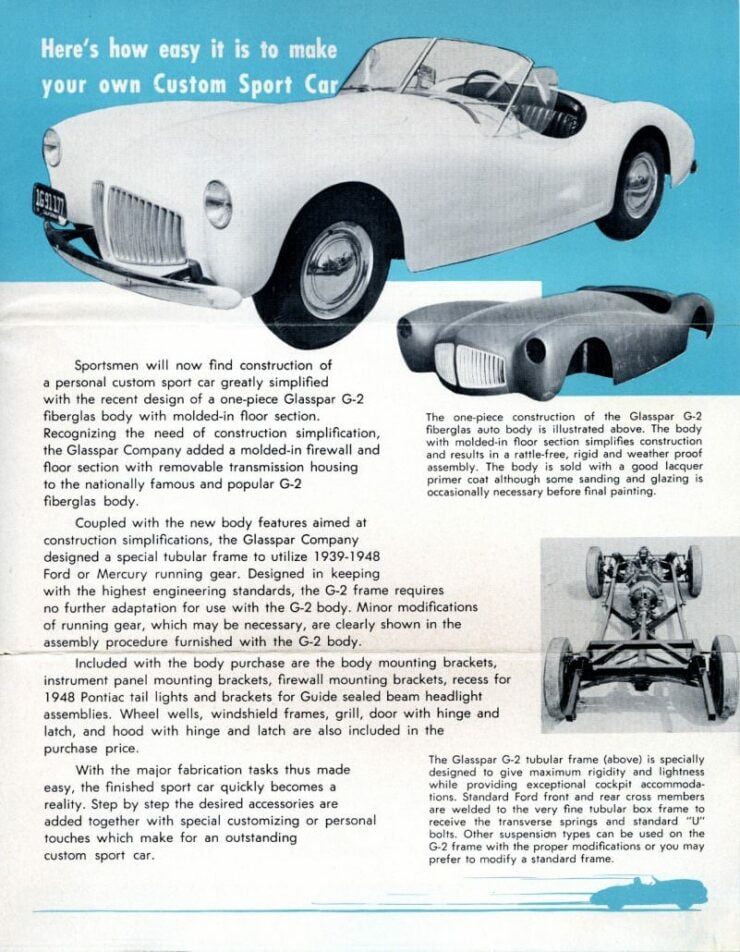

Though only around 150 G2s were produced between 1951 and 1955, their impact on the automotive world was immense. The G2 demonstrated the practicality and potential of fiberglass in car construction, inspiring other manufacturers to adopt the material. The G2’s success also helped popularize kit cars, as many enthusiasts began to build their own fiberglass-bodied sports cars using G2 molds.
The Glasspar G2’s innovative design, lightweight construction, and groundbreaking use of fiberglass left a lasting legacy in the automotive world. Bill Tritt’s vision for a fiberglass sports car transformed the industry, leading to the development of iconic cars and fostering a new generation of lightweight, high-performance vehicles.
The 1951 Glasspar G2 Shown Here
The car you see here in this article is a 1951 Glasspar G2 that has spent the last few years on display at the Horton Classic Car Museum.
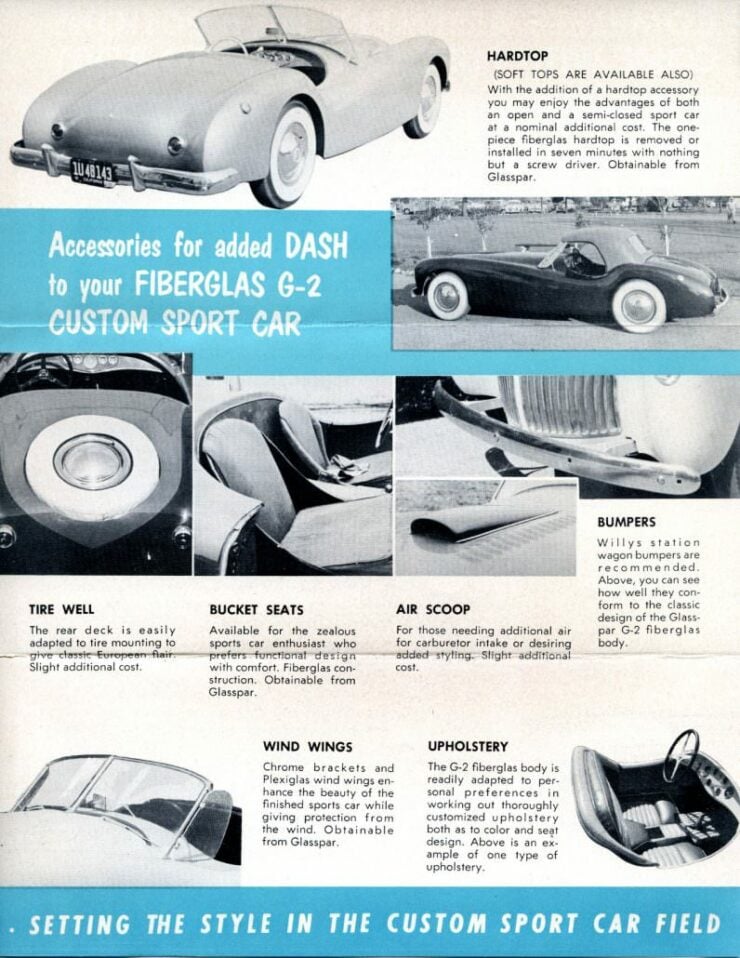

It’s powered by a Mercury 255 cubic inch flathead V8 engine, with power sent back through a 3-speed manual transmission with Hurst Indy shifter. The engine is topped with three two-barrel carburetors and a set of Offenhauser heads, as well as a polished aluminum intake manifold.
The car is finished in black with white pleated bucket seats for two inside, it has a banjo-style steering wheel, and it rides on steel wheels with whitewall tires, chrome hubcaps, and trim rings. This G2 was shown at the 2007 Amelia Island Concours d’Elegance and it later won a 1st place trophy at the 2013 American Hero Classic Car Show in Texas.
It’s now due to roll across the auction block with Mecum in mid-April in Houston, Texas. If you’d like to read more about it or register to bid you can visit the listing here.
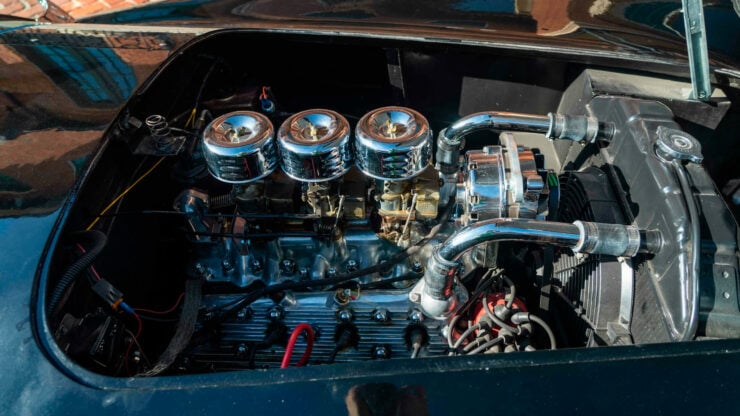
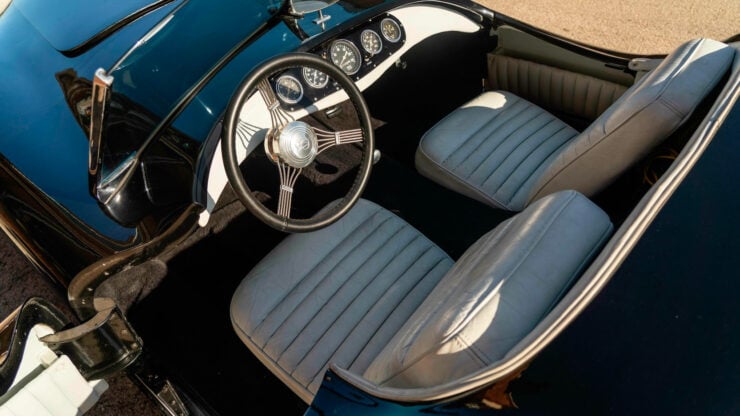
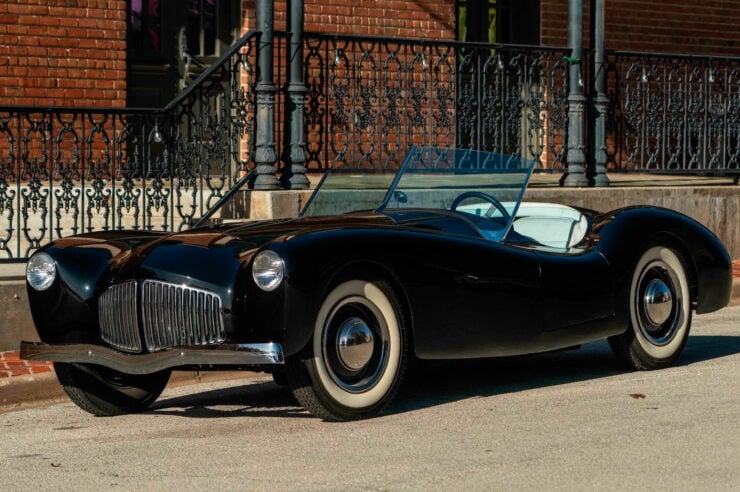
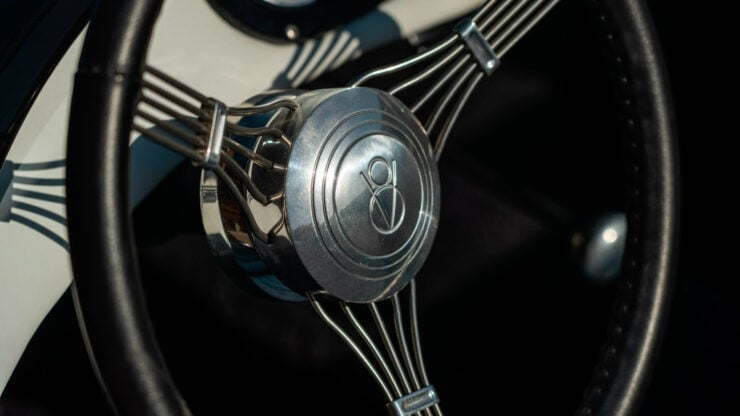
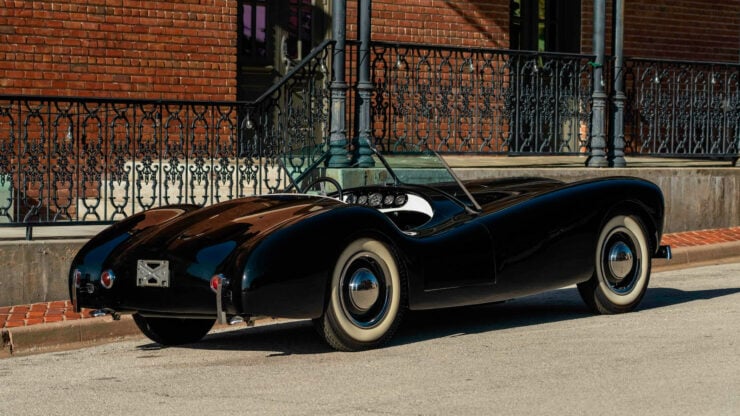
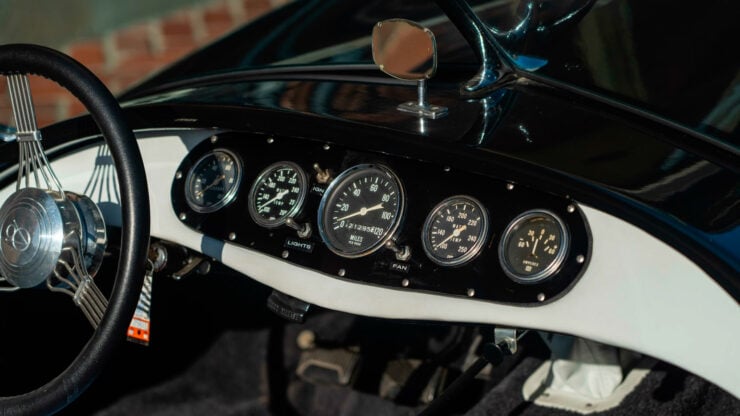
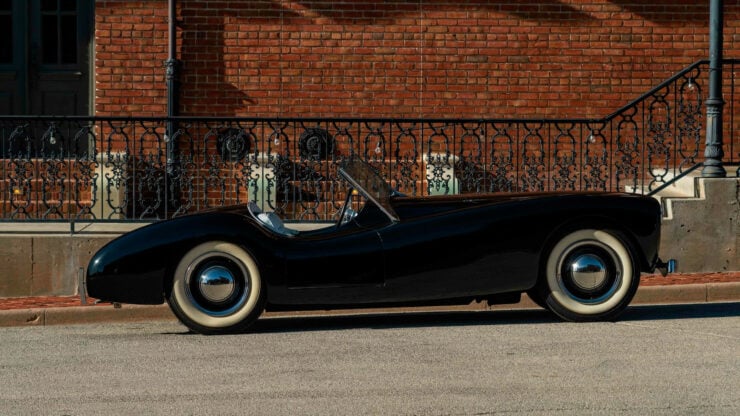
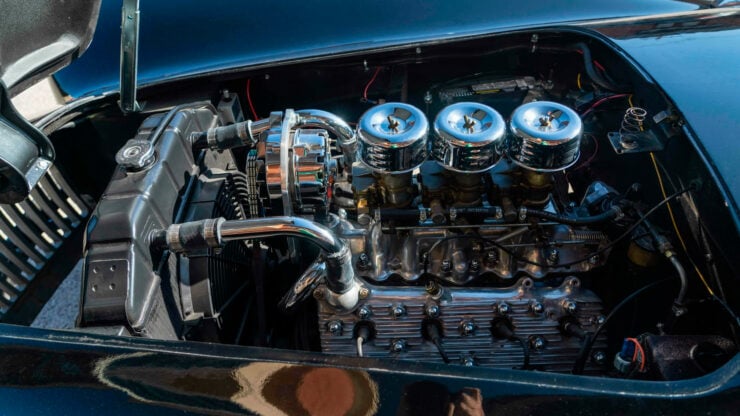
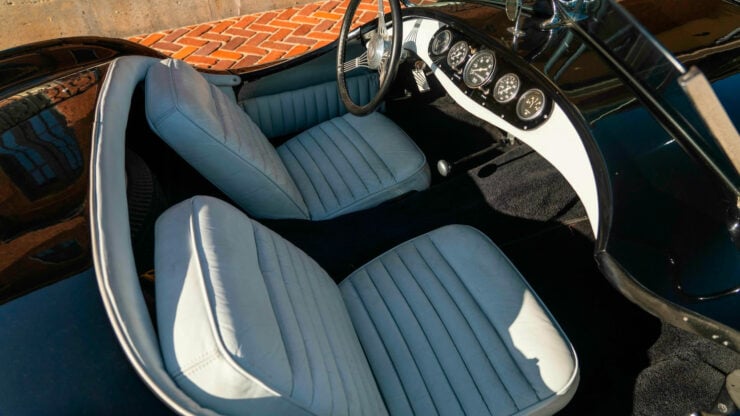
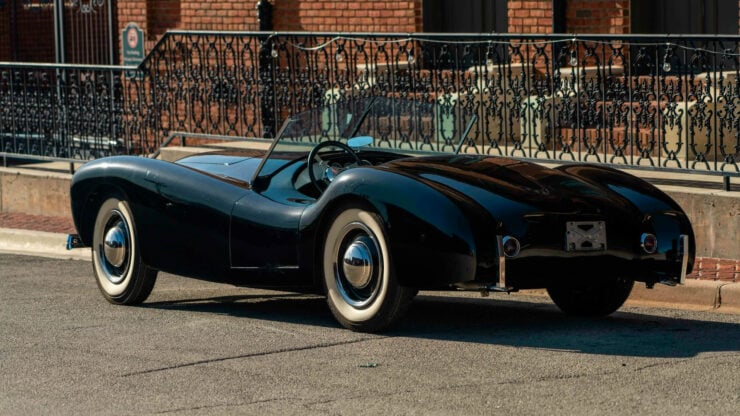
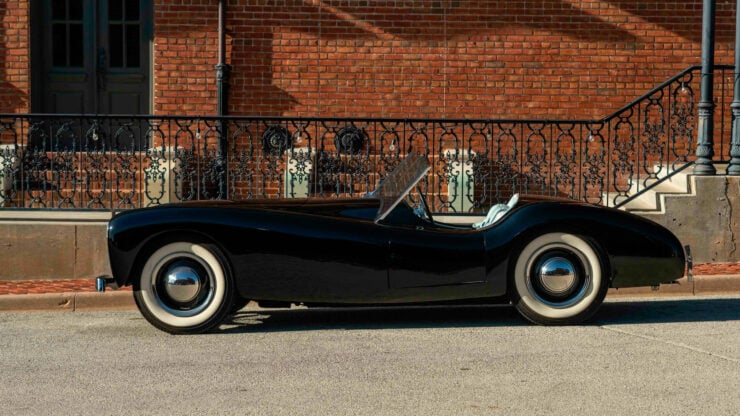
Images courtesy of Mecum

Articles that Ben has written have been covered on CNN, Popular Mechanics, Smithsonian Magazine, Road & Track Magazine, the official Pinterest blog, the official eBay Motors blog, BuzzFeed, Autoweek Magazine, Wired Magazine, Autoblog, Gear Patrol, Jalopnik, The Verge, and many more.
Silodrome was founded by Ben back in 2010, in the years since the site has grown to become a world leader in the alternative and vintage motoring sector, with well over a million monthly readers from around the world and many hundreds of thousands of followers on social media.

